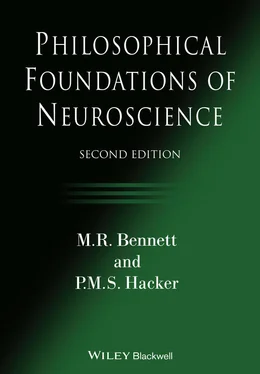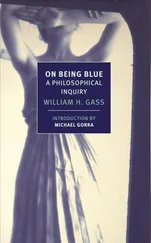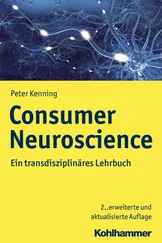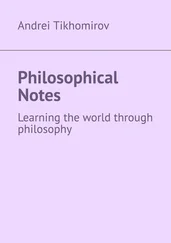23 23J. H. Jackson, ‘On the anatomical, physiological and pathological investigations of epilepsies’, West Riding Lunatic Asylum Medical Reports, 3 (1873), pp. 315–19.
24 24Penfield obviously meant that it was the closest approximation to the concept of a butterfly.
25 25Indeed, to explain what the mind or spirit is, Penfield quoted Webster’s Dictionary: ‘the element … in an individual that feels, perceives, thinks, wills and especially reasons’ (MM 11).
26 26It is striking to compare Penfield’s conception of this matter with Descartes’s remarkable simile in his Treatise on Man: ‘when a rational soul is present in this machine [namely, the body] it will have its principal seat in the brain, and reside there like the fountain keeper who must be stationed at the tanks to which the fountain’s pipes return if he wants to produce, or prevent, or change their movements in some way’ (AT XI, 131). Here the tank is the ventricle in which the pineal gland is allegedly suspended, the pipes are the nerves and the water the animal spirits.
3 The Mereological Fallacy in Neuroscience
3.1 Mereological Confusions in Cognitive Neuroscience
Ascribing psychological attributes to the brain
Leading figures of the first two generations of modern brain-neuroscientists were fundamentally Cartesian. Like Descartes, they distinguished the mind from the brain, and ascribed psychological attributes to the mind. The ascription of such attributes to human beings was, accordingly, derivative – as in Cartesian metaphysics. The third generation of neuroscientists, however, repudiated the dualism of their teachers. In the course of explaining the possession of psychological attributes by human beings, they ascribed such attributes not to the mind but to the brain or parts of the brain.
Neuroscientists assume that the brain has a wide range of cognitive, cogitative, perceptual and volitional powers. Francis Crick asserts:
What you see is not what is really there; it is what your brain believes is there.… Your brain makes the best interpretation it can according to its previous experience and the limited and ambiguous information provided by your eyes.… the brain combines the information provided by the many distinct features of the visual scene (aspects of shape, colour, movement, etc.) and settles on the most plausible interpretation of all these various clues taken together.… what the brain has to build up is a many-levelled interpretation of the visual scene.… [Filling-in] allows the brain to guess a complete picture from only partial information – a very useful ability. 1
So the brain has experiences, believes things, interprets clues on the basis of information made available to it, and makes guesses . Gerald Edelman holds that structures within the brain ‘categorize, discriminate, and recombine the various brain activities occurring in different kinds of global mappings’, and that the brain ‘recursively relates semantic to phonological sequences and then generates syntactic correspondences, not from preexisting rules, but by treating rules developing in memory as objects for conceptual manipulation’. 2Accordingly, the brain categorizes ; indeed, it ‘categorizes its own activities (particularly its perceptual categorizations)’, and conceptually manipulates rules . Colin Blakemore argues that
We seem driven to say that such neurons [as respond in a highly specific manner to, e.g., line orientation] have knowledge. They have intelligence, for they are able to estimate the probability of outside events – events that are important to the animal in question. And the brain gains its knowledge by a process analogous to the inductive reasoning of the classical scientific method. Neurons present arguments to the brain based on the specific features that they detect, arguments on which the brain constructs its hypothesis of perception. 3
So the brain knows things, reasons inductively, and constructs hypotheses on the basis of arguments, and its constituent neurons are intelligent , can estimate probabilities , and present arguments . J. Z. Young shared much the same view. He argued that ‘we can regard all seeing as a continual search for the answers to questions posed by the brain. The signals from the retina constitute “messages” conveying these answers. The brain then uses this information to construct a suitable hypothesis about what is there.’ 4Accordingly, the brain poses questions, searches for answers and constructs hypotheses . Antonio Damasio claimed that ‘our brains can often decide well, in seconds, or minutes, depending on the time frame we set as appropriate for the goal we want to achieve, and if they can do so, they must do the marvellous job with more than just pure reason’, 5and Benjamin Libet suggested that ‘the brain “decides” to initiate or, at least, to prepare to initiate the act before there is any reportable subjective awareness that such a decision has taken place’. 6So brains decide , or at least ‘decide’, and initiate voluntary action .
Psychologists concur. J. P. Frisby contended that ‘there must be a symbolic description in the brain of the outside world, a description cast in symbols which stand for the various aspects of the world of which sight makes us aware’. 7So there are symbols in the brain , and the brain uses , and presumably understands, symbols . Richard Gregory conceived of seeing as ‘probably the most sophisticated of all the brain’ s activities: calling upon its stores of memory data; requiring subtle classifications, comparisons and logical decisions for sensory data to become perception’. 8So the brain sees, makes classifications, comparisons , and decisions . And cognitive scientists think likewise. David Marr held that ‘our brains must somehow be capable of representing … information … The study of vision must therefore include … also an inquiry into the nature of the internal representations by which we capture this information and make it available as a basis for decisions about our thoughts and actions.’ 9And Philip Johnson-Laird suggested that the brain ‘has access to a partial model of its own capabilities’, and has the ‘recursive machinery to embed models within models’; consciousness, he contended, ‘is the property of a class of parallel algorithms’. 10
3.2 Challenging the Consensus: The Brain Is Not the Subject of Psychological Attributes
Questioning the intelligibility of ascribing psychological attributes to the brain
With such broad consensus on the correct way to think about the functions of the brain and about explaining the causal preconditions for human beings to possess and exercise their natural powers of thought and perception, one is prone to be swept along by enthusiastic announcements – of new fields of knowledge conquered, new mysteries unveiled. 11But we should take things slowly, and pause for thought. We know what it is for human beings to experience things, to see things, to know or believe things, to make decisions, to interpret equivocal data, to guess and to form hypotheses. We understand what it is for people to reason inductively, to estimate probabilities, to present arguments, to classify the things they encounter in their experience. We pose questions and search for answers, using a symbolism – namely, our language – in terms of which we represent things. But do we know what it is for a brain to see or hear, for a brain to have experiences, to know or believe something? Do we have any conception of what it would be for a brain to make a decision? Do we grasp what it is for a brain (let alone a neuron) to reason (no matter whether inductively or deductively), to estimate probabilities , to present arguments , to interpret data and to form hypotheses on the basis of its interpretations? We can observe whether a human being, a person, sees something or other – we look at his behaviour and ask him questions. 12But what would it be to observe whether a brain sees something – as opposed to observing the brain of a human being when he sees something. We recognize when someone asks a question and when someone else answers it. But do we have any conception of what it would be for a brain to ask a question or answer one? These are all attributes of human beings. Is it a new discovery that brains also engage in such human activities? Or is it a linguistic innovation, introduced by neuroscientists, psychologists and cognitive scientists, extending the ordinary use of these psychological expressions for good theoretical reasons? Or, more ominously, is it a conceptual confusion? Might it be the case that there is simply no such thing as the brain’ s thinking or knowing, seeing or hearing, believing or guessing, possessing and using information, constructing hypotheses, etc. – that is, that these forms of words make no sense? But if there is no such thing, why have so many distinguished scientists thought that these phrases, thus employed, do make sense?
Читать дальше












